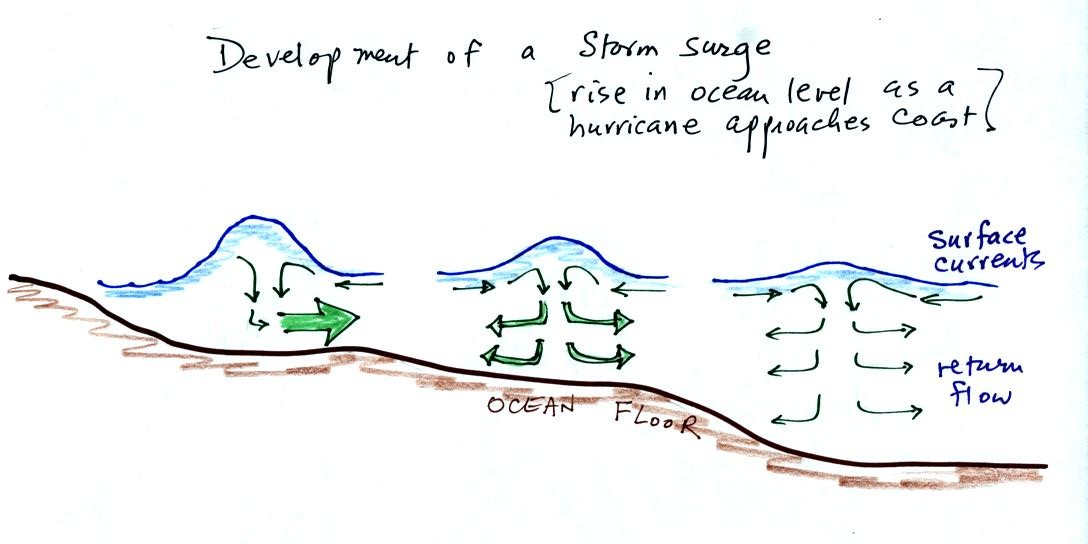Monday Dec. 3, 2007

A crossectional view of a mature hurricane and a picture
like you might
see on a satellite photograph.
Sinking air in the very center of a hurricane produces the clear skies
of the eye, a hurricane's most distinctive feature. The eye is
typically a few 10s of miles across, though it may only be a few miles
across in the strongest hurricanes.
A ring of strong thunderstorms, the eye wall, surrounds the eye.
This is where the hurricane's strongest winds found.
Additional concentric rings of thunderstorms are found as you move
outward from the center of the hurricane. These are called rain
bands. These usually aren't visible until you get to the outer
edge of the hurricane because they are covered by high altitude clouds.

Out at sea, the converging surface
winds
create
surface
currents
in the
ocean that transport water toward the center of the hurricane.
The rise in ocean level is probably only a few feet, though the waves
are much larger. A return flow develops underwater that carries
the water back to where it came from.
As the hurricane approaches shore, the ocean becomes
shallower.
The return flow must pass through a more restricted space. A rise
in ocean level will increase the underwater pressure and the return
flow will speed up. More pressure and an even faster return flow
is needed as the hurricane gets near the coast.
Here is a link to the storm surge website
(from the Hurricane Research Division of the Atlantic Oceanographic and
Meteorological Labororatory). It has an interesting animation
showing output from the SLOSH model used to predict hurricane storm
surges.

Hurricanes can, of course, be very
destructive. Out at
sea the
main hazards are the strong winds and the large waves. The
Perfect Storm by Sebastian Junger describes the sinking of the Andrea
Gail in a strong hurricane like storm in October 1991. The exact
fate of the fishing ship is not known but it may have been turned end
over end by a large wave (pitch poled). Large waves can also
flood a ship and begin to fill it with water.
Along a coast the greatest threat is from the hurricane winds and the
storm surge. Large waves are superimposed on the storm surge.
The hurricanes winds slow quickly as it moves onshore, though
tornadoes may form. The biggest threat is from flooding.
Hurricanes can easily drop a foot or more of rain on an area as they
pass through.


